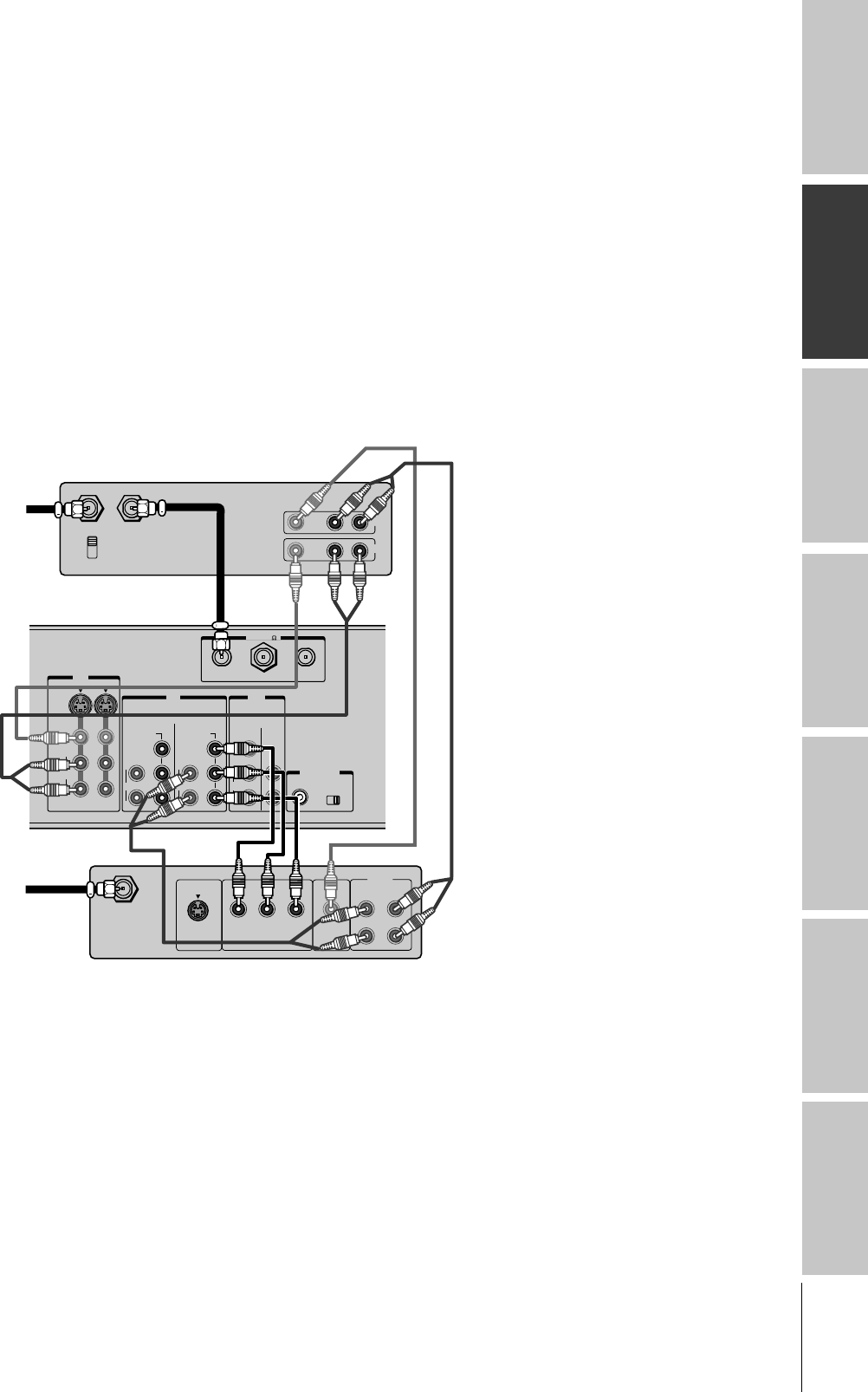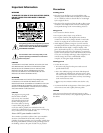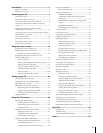
Introduction
Connecting
your TV
Using the
Remote Control
Setting up
your TV
Using the TV’s
Features
Appendix
Index
9
Connecting a DTV receiver/set-top box (with
or without ColorStream™) and a VCR
This connection allows you to watch DTV (digital TV broadcast),
VCR, and TV programs, and record DTV and TV programs. You can
record from one source while watching a program from another
source.
Your TV has ColorStream component video inputs. Connecting your
TV to a ColorStream-compatible DTV receiver can greatly enhance
picture quality and realism.
You will need:
• one coaxial cable
• three pairs of audio cables (two single and one pair of audio
cables for a mono VCR)
• two video cables
• one set of ColorStream video cables (one S-video cable for a non-
ColorStream DTV receiver; see notes at right)
VIDEO
OUT
S-VIDEO
AUDIO
COMPONENT VIDEO
OUT
L
R
L
R
P
R
P
B
Y
Satelite IN
IN from ANT
OUT to TV
CH 3
CH 4
VIDEO AUDIO
LR
IN
OUT
ANT-1 OUT ANT-2
ANT(75 )
S-VIDEO
VIDEO
L/
MONO
AUDIO
R
VIDEO-2VIDEO-1
Y
P
B
P
R
L
Y
P
B
P
R
AUDIO
COLOR
STREAM
HD - 2
COLOR
STREAM
HD - 1
R
L
AUDIO
R
OUT
AUDIO CENTER
CHANNEL IN
L/
MONO
AUDIO
ON OFF
VIDEO
VAR
AUDIO
L
R
R
IN
IN
DTV Receiver
VCR
From
Antenna
From
DTV Antenna
TV
Note:
For the highest possible picture quality, you
must use ColorStream video cables between
the TV and DTV receiver. You can connect the
ColorStream cables from the DTV receiver to
either ColorStream jack on the TV (HD1 or
HD2).
The ColorStream HD1 and HD2 jacks can be
used with Progressive (480p) and Interlace
(480i,1080i) scan systems.
If your DTV receiver is not ColorStream-
compatible, use the S-video connections
(both audio and video) instead of the
ColorStream connections. Do not connect
both S-Video and ColorStream cables
between the TV and DTV receiver at the same
time.
To record from the DTV receiver, set the VCR
to Line IN. To monitor recording from the DTV
receiver, set the VCR to Line IN, and set the
TV to Video-1.
Caution:
The unauthorized recording of television
programs, videotapes, and other materials
may infringe upon the provisions of copyright
laws.


















